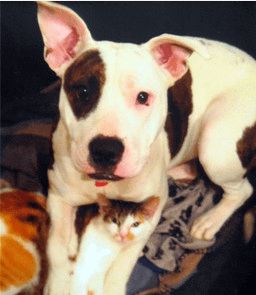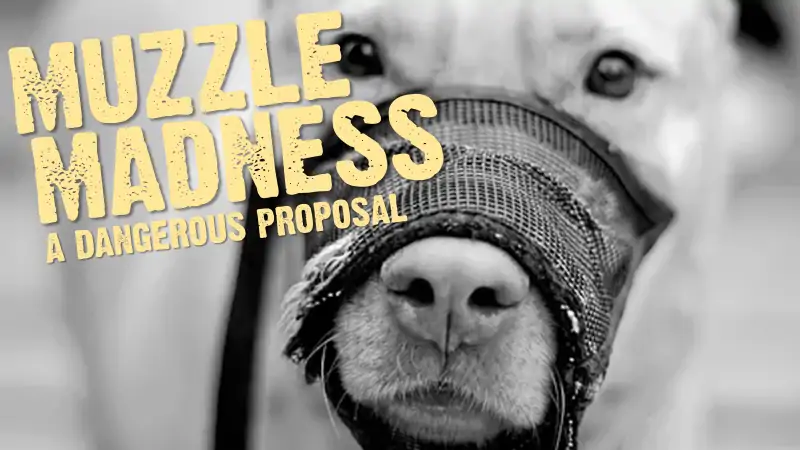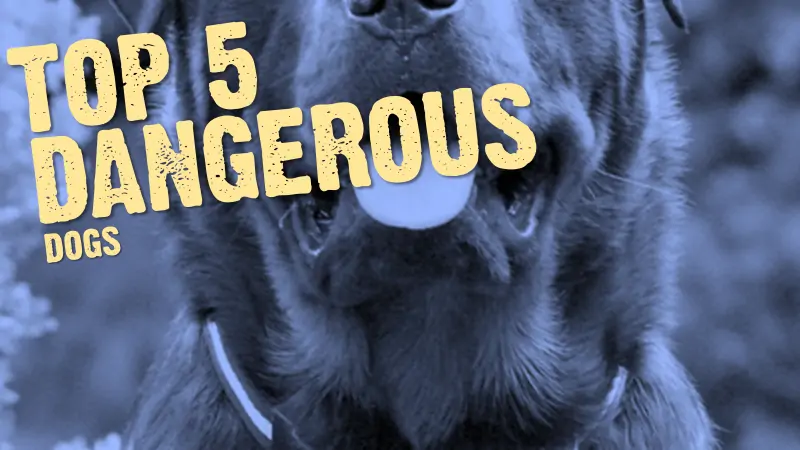A key witness who described a friendly, family dog as a pit bull type has been overruled by a judge.
Magistrates ordered the death of the pet dog, named Ice, in March of this year. She was kept in police kennels – at tax payer’s expense – pending an appeal to the court.
Barrister Ian Graham, resisting the appeal in Plymouth Crown Court, said that the temperament of the dog was not in question.
So-called pit bull expert Peter Tallack accepted that Ice was not a purebred dog but wrongly claimed she was a pit bull terrier type.
He said: “The physical characteristics of these dogs make them enormously powerful, far more powerful than a normal dog. In the wrong circumstances it is that potential which causes the problem.”
Just for your visual reference, here is a picture of the ‘abnormally strong’ and ‘enormously powerful’ Ice.

A judge, sitting with two magistrates, disagreed with Tallack and ruled that Ice is not a pit bull type.
The appeal against the destruction order was upheld and Ice is all set to be returned to her family following a lengthy stay at a police kennels.
Ice is one of the lucky ones, that is assuming she hasn’t suffered long term psychological trauma as a result of being snatched from her family and kept in police kennels (where dogs often die waiting for their trial date and where they can not be seen or comforted by their family). How many dogs have been killed as a result of erroneous testimony from so-called ‘expert’ witnesses who dedicate their time trying to have dogs put to sleep on the basis of what they look like rather than what they’ve done?
Mr Barton, Ice’s owner, speaking after the case, said: “We are really happy. It has been a very long time. She has a lovely nature, she is a real family dog.
“She grew up with my daughter, Hope, who is now aged three. We have had to tell her that she has been in hospital with a sore leg.
Defence expert Kendal Shepherd listed 68 characteristics of the pit bull type. She said that Ice only conformed to 45 per cent of the traits.
Dr Shepherd said she believed that dog more closely conformed to an English and Staffordshire Bull Terrier cross.
Judge Paul Darlow, sitting with two magistrates, took only minutes to grant the appeal following hours of complex technical and legal argument, again at tax payer’s expense.
UK: Do You Know What a Pit Bull Is?
One of the more misunderstood breed types in the United Kingdom, the Pit Bull is on the banned breeds list in accordance with the 1991 Dangerous Dogs Act. But the question is, do you know what one is, what they look like or anything about them other than the media hype?
What Is a Pit bull in the UK?
The use of the term “pit bull” is one that over the last 18 months has become increasingly commonplace yet many people will freely use the term without knowing exactly what it is that they are referring too. So what exactly is a “pit bull” in the United Kingdom in 2008?
Breed or type?
First and foremost in the UK it is illegal to own any dog that is a type of dog known as a”pit bull type”. The breed American Pit Bull Terrier has never been recognised here so by the Government so, instead of banning a breed that they didn’t believe existed, they banned all dogs that looked like them. They attempted to ban a type of dog.
Definition
When the first cases of dogs charged with being illegal pit bull terriers went before the courts a huge problem became apparent. The courts had to decide, beyond reasonable doubt, that a dog was indeed a dog that fitted the “type”. Several Home Office Circulars followed issuing advice but it was decided by the High court in 1993 that a dog was a “type known as a pit bull terrier” if it had a substantial number of characteristics of an American Pit Bull Terrier. In order to decide this they need to know what an American Pit bull Terrier should look like. It was then decided in 1993 to use the breed standard as drawn up by the American Dog Breeders Association at that time. In recent years the ADBA have changed the standard a number of times however the first standard is the one referred to in UK courts today. The High Court also stated that a dog could be of the “type known as the pit bull terrier” regardless of its parentage and that behaviour was relevant but not conclusive.
Identification
Under Section One of the DDA a dog becomes a pit bull type if it has a substantial number or most of the characteristics of an American Pit Bull Terrier as described by the ADBA standard. Substantial or most is normally a dog that scores more than 60 percent. Once an accusation has been made it is up to the defence to prove otherwise, not the prosecution to prove the dog is a pit bull type. The standard sets out 100 points to consider when looking at the perfect APBT. Out of those 100 points only 10 points can be given in respect of the dogs attitude/behaviour. The way a dog is scored falls down to interpretation. For example a number of points can be given for a dog with a muscular build.
Any dog is capable of having a muscular build of varying degrees and each person will have a different idea on how well muscled a dog is therefore leaving several people giving different scores on the same dog. The standard also suggests the tail should rest at the hock however some will give points for a tail that rests just above or below. There is also a lot of debate over various points of the standard and how it is to be interpreted.
As all dogs, even litter mates are never identical one dog may score more or less than its sibling. This often leads to dogs with the same parentage being split into “pit bull type” and not “pit bull type” Sometimes simply by being a little taller, having a slightly shorter muzzle and a tail being a little too long can make the distinction between illegal or legal.
Other breeds or cross breeds can and have been, deemed pit bull type. When looking at any dog stated as being another breed, it often falls to which standard scores the most points. If a Stafford for example doesn’t fit the Kennel Club breed standard for a Stafford quite as well as it does the ADBA standard for an APBT then its quite possible a court will find the dog to be pit bull type.
In the court.
Court is often a bizarre experience for an onlooker. Expert witness’s will take the stand in hearings that often take two or more days to hear fully and discuss each point in turn. The very serious topic of dangerous dogs is stripped down to the bare bones, quite literally. The experts will state whether in their opinion the shape of the eyes is correct, whether the coat is a single coat or not. They will argue over whether a tail is pump handled when relaxed.
They will all produce pictures to try and prove their point. Interpretation of each point will be argued. The dog will be weighed and measured and all will be noted and scored. The Judge will then have to decide if the defence have proved beyond reasonable doubt that the dog isn’t a prohibited type. It is not up to the prosecution in Section One cases, to prove the dog is a pit bull type to obtain a guilty verdict.
So there we have it. That’s what a pit bull type aka “dangerous dog” is in the UK legal system today. Its any dog that a judge believes scores enough points, mainly in conformation, on a breed standard that is no longer used in that exact form as a standard for that breed.
Enter your email and never miss out on receiving our best articles:








6 comments
Please sign to stop this happening in the UK https://petition.parliament.uk/petitions/104925
Very well written article pointing out the RIDICULOUS FACTS WHICH MAKE UP BSL! I work with pound dogs, we had a 12 week old puppy typed and sentenced to death in this country. Because IT COULDN’T BE PROVED SHE WASN’T TYPE….so they opted for the SAFE OPTION…..MURDER HER ANYWAY 🙁 Until the law is reviewed MANY INNOCENTS WILL DIE 🙁
Defra’s Guidance for the police when assessing for type is flawed and misleading where it is states that a dog must be substantially more type than any other breed, and leaves it open to individual interpretation. The actual wording from the judge was “if the dog approximately amounted to, was near to, or had a substantial number of the characteristics of the pit bull terrier as set out in the ABDA’s standard.” (Regina v Knightsbridge Crown Court).
Speak to the Met Status Dog Unit about how they assess and they only mention the ‘substantial’ part, not ‘approximately amounted to’ or ‘was near to’, which allows them to use a lower conformity rate percentage (as the 60% quoted above). Since when has 60% been anything close to ‘approximately amounted to’ or ‘near to’?
Defra made these guidelines with the help of both the Met police and the RSPCA. There is a huge variance in individual officer’s interpretation of ‘substantial’ – according to the Status Dog Unit some will say as low as 55% compliance is enough to be deemed type, others 90%. How can this be described as justice?
Peter Tallack. What a joke He was Belfast City Council dog expert in tbe Lennox case. Everybody is aware of his morals. Well done Ice.
Peter Tallack was Yves so-called expert who is responsible for the death of a dog called Lennox in Northern Ireland.
He needs removing from any list of prosecution witnesses in these case’s. He has no formal training in identifying pit bulls or those deemed as of type.
He was a police dog handler and to my current knowledge that’s all he ever was.
Somebody needs to carry put a full investigation on him.
Why is anyone surprised ? This is PETER TALLACK we are talking about. The whole law is a shambles in any case.